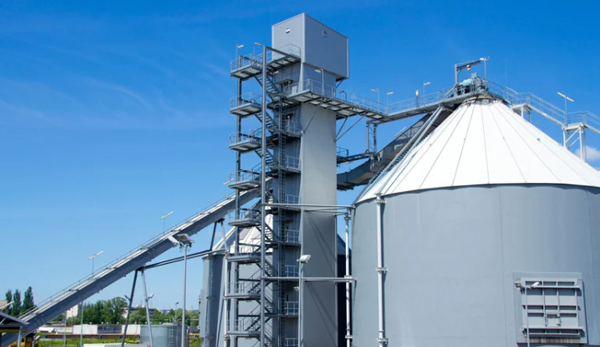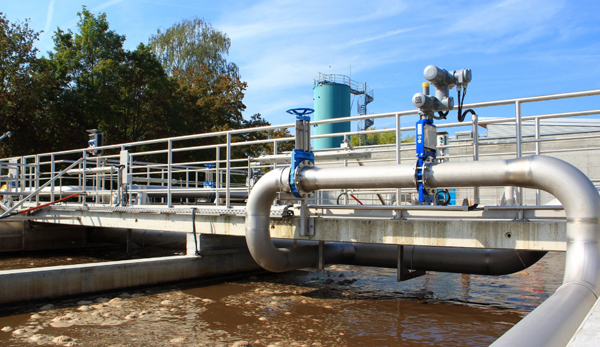- Gate valve
-
- DN1000 Extension stem double flange soft seal gate valveDIN F4 resilient seated gate valveDN450-1200 Resilient Seated Gate ValveDIN F5 resilient seated gate valveSocket connection soft seal gate valveUnderground cap soft seal gate valveBS5163 rising stem soft seal gate valveHard seal gate valveAPI slab Gate ValveStainless steel flange gate valveWafer knife gate valvePneumatic gate valveSoft seal gate valveExtension stem gate valveUL/FM fire protection groove ends gate valveRising stem forged steel gate valvecarbon steel gate valveStainless steel threaded gate valveDIN soft seal gate valveANSI soft sealing gate valve 200PSICast iron gate valveBS resilient seated gate valve
- Butterfly valve
-
- DN900 pneumatic triple eccentric hard seal butterfly valveD643H Triple Eccentric Butterfly ValveD343H Hard seal butterfly valveMulti standard EPDM seated butterfly valveSingle flange butterfly valveDN2000 Double eccentric butterfly valveFlange butterfly valveLug butterfly valveWafer butterfly valve with handleWorm gear operated butterfly valveWafer lined fluorine butterfly valveStainless steel wafer butterfly valveStainless steel flanged butterfly valveThree eccentric flange butterfly valvePneumatic flanged butterfly valvePneumatic wafer butterfly valveTriple eccentric butterfly valve wafer typeWafer butterfly valve ULC approvedInflatable seat butterfly valveHigh performance butterfly valveGrooved end butterfly valveElectric soft seal butterfly valveFlange fluorine lined butterfly valveHandle aluminum butterfly valveWorm Gear Aluminum Butterfly ValveFull PTFE lined butterfly valve wafer typeOne stem no-pin wafer butterfly valveMulti standard aluminum stem butterfly valveStainless Steel wafer Butterfly ValveAluminium handle operated lug butterfly valveLever Operated Flange Butterfly ValveButterfly valve stemButterfly valve discButterfly valve seat
- Ball valve
-
- DN1400 top-mounted eccentric semi-ball valveFlanged three-way ball valveFully welded ball valveNatural gas ball valveHigh platform flange ball valve1 PC ball valveFixed ball valvePTFE seat flanged ball valveMetal seat ball valveAPI 6D ball valve3 Piece ball valveFull Bore 3 way ball valve L-Port3 Way T-Port ball valve2PC Ball valve female thread stainless steel
- Globe Valve
-
- API Carbon Steel Globe ValveBellows Globe ValveStainless steel flange globe valveStainless steel thread S type globe valveStainless steel thread B type globe valveCast Steel Globe ValvePiston Globe ValveWCB Carbon Steel Globe Check Valveelectric motorized control stainless steel SS316 globe valveBrass Globe ValveCryogenic Globe valveHT200 Globe ValveThreaded Stainless Steel Globe ValveGG25 Globe ValveANSI API Cast Steel And Stainless Steel Globe valve
- Check valve
-
- Rubber seal check valveDN800 Slow closing check valveDN800 Rubber Disc Check ValveButterfly Buffering Check Valvecheck valve with counter weightSilent Check ValveWCB Swing check valveSwing Check ValveSingle Chip Check Valve H74WStainless Steel Wafer Check ValveSwing Start Check ValveFoot check valveAPI Swing Check ValveDIN Flange check valveSingle plate check valveLifting Check ValveBottom ValveHammer Diminish Noises Check ValveWafer Check ValveWafer dual plate check valve
- Control valve
-
- Static Balancing ValveCage Guided Sleeve Globe Control ValveDN1000 Piston Flow Regulating ValveDN1600 Electric Actuator Flow Regulating ValvePneumatic Flanged Butterfly ValvePneumatic Wafer Butterfly ValveAngle Seat ValvePneumatic gate valveElectric three-way control valveElectric sleeve control valve
- Water Meter
-
- Vertical Type Water MetersStainless steel threaded water meterPiston water meterPlastic water meterMore flow rotor dry water meterspiral vane flange water meterCI wotlman water meter with pulse outputLXCLG(R) Vertical removable element woltman cold (hot) water meterSingle flow rotor dry water meterPrepaid Token Water MeterElectromagnetic flowmeterRotary Piston Liquid Sealed Water MeterRotary Piston Liquid Sealed Water Meter
- Air valve
-
- Double ball exhaust valveDoubleair Air Valve SaudiDoubleair Air Valve Southeast AsiaDoubleair Air Valve South AmericaDouble Air ValveThreaded Air ValveSingle Air ValveTriple Functions Air ValveAutomatic Air Release ValveAutomatic release valveAutomatic exhaust valveComposite Exhaust Air ValveBrass exhaust valveDouble Ball Air Valve
- Pipe Repair & Coupling
-
- Flexible Multi-Function Pipe Coupling ZFJ-SSS Semi-Circle Pipe Repair Clamp SJW-HDuctile Iron Band Repair ClampStainless Steel Band Repair ClampDouble-Section Pipe Repair CouplingFolding Type Pipe RepairSingle-Section Multi-Function Pipe Coupling MF-SGear-Ring Type Multi-Function Pipe Coupling GR-SZBW Damping Corrugated Hose
- Dismantling Joint
-
- VSSJAFC(CC2F) Detachable Flange Transmission JointVSSJA-2(B2F) Double Flange Limited Expansion JointVSSJA-1(BF) Single Flange Limited Expansion JointVSSJA(AF) Flange Loose Expansion JointJGD-B Threaded Rubber JointZBW Damping Corrugated HoseKXT-S Flexible Dual-Spherical Rubber JointKXT Rubber Soft JointFlange Adaptor
What conditions are valves commonly used in?
The seven industries commonly used and how they use valves:
Gate valves are preferred for on / off applications in power plants. Sometimes other valves, such as the Y-type cut-off valves, are also used. The use of high-performance ball valves is widely popular in the power industry.
Power plant applications put the pipes and valves under enormous pressure, so the valves require strong materials and designs to cope with the multiple tests of circulation, temperature, and pressure. In addition to the main steam valves, the power plant also has many auxiliary pipes. These auxiliary pipe consists of a wide variety of stop valves, butterfly valves, check valves, ball valves, and gate valves.
Water plant Water plants require relatively low pressure levels and ambient temperatures.
Because the water temperature is room temperature, rubber seals and elastomers that are not suitable elsewhere can be used. These types of materials can be achieved by sealing the mounting of water valves to prevent water leakage. Valves in waterworks are usually much lower than 200 psi, so no high pressure and wall thickness pressure design is required. Unless valves need to be used at high pressure points in a dam or a long channel, a built-in water valve may be required to withstand around 300 psi.
Offshore industry The pipeline system for offshore production facilities and oil drilling platforms contains a large number of valves.
These valve products have multiple specifications to handle all flow control problems. A key part of an oil production facility is the natural gas or oil recovery pipeline system. This system is not just used on the platform, its production system is usually used at depths of 10,000 feet or more.
The larger oil platforms require more processing of the crude oil from the wellhead. These treatments include the separation of gas from fluid vapor (natural gas) and the separation of water from hydrocarbons. These systems usually use ball and check valves as well as API 6D gate valves. API 6D Valves are not suitable for applications with strict requirements on pipelines, and are generally used in internal facility pipelines on drilling ships or platforms.
Sewage treatment plants use low-pressure pipes and valves, and in many cases, wastewater valves are more more demanding than clean water requirements. Check valves and iron gates are the most popular options for wastewater treatment.
Oil and natural gas production Gas wells and oil wells and their production facilities use many heavy-duty valves.
Underground natural gas and oil have great pressure, and oil and gas can spray 100 meters high in the air. The combination of valves and special fittings exceeds 10,000 psi. This pressure is rare on land and is more common in deep-sea oil wells.
Valves used for wellhead equipment are subjected to high temperatures and extremely high pressure. Valve and pipe combinations usually contain special stop valves (called throttle valves) and gate valves. Special stop valves are used to regulate the flow rate from the well.
In addition to the wellhead, there are facilities requiring valves on natural gas and oil fields. These include process equipment for pretreating natural gas or oil. These valves are usually carbon steel and of lower grade.
Water pipeline Many important valves are used in these pipes: for example, emergency pipe stop valves.
The emergency valve may isolate a section of the pipe for maintenance or leakage. There are also scattered facilities along the pipeline: this is where the pipeline emerges from the ground, which is the equipment used to inspect and clean the production line. These stations contain multiple valves, which are usually ball valves or gate valves. The valves of the piping system must be fully opened to allow the sewer equipment through.
Commercial buildings Standing commercial buildings, with a lot of pipelines inside.
After all, every building needs water and electricity. For water, there must be various piping systems to transport tap water, waste water, hot water and fire prevention facilities.
In addition, in order to make the fire system work normally, they must have sufficient pressure, and the type and type of fire assembly valve must be approved by the corresponding management authority before installation.
Pre : What is a bellows steam trap?
Next : What is an angle valve?









